Homemade marmalade compares favorably with store-bought counterparts. It does not include harmful dyes, thickeners and preservatives. Therefore, it turns out not only tasty, but also quite useful. This sweet delicacy is prepared in several different recipes. The most interesting of them will be discussed in today's article.
Variant with sorbitol
According to this recipe, you can relatively quickly make natural chewing marmalade at home. With gelatin, it perfectly holds the desired shape, so it can be made in the form of any figures or animals. This sweet treat contains no harmful ingredients, which means it's perfect for children's menu. To prepare it you will need:
- Seventy grams of gelatin.
- One hundred and forty milliliters of water.
- Two hundred twenty-five grams of sugar.
- Two hundred and forty-five milliliters of glucose syrup.
- Twenty-three grams of sorbitol.
- Lemon juice.
- Fifteen grams of tartaric acid.
Process description
This recipe for marmalade at home (with gelatin) is quite simple. Therefore, even an inexperienced hostess who has never encountered such tasks before can easily master it. On the initial stage you should do gelatin. It is dissolved in water and wait until it swells well.
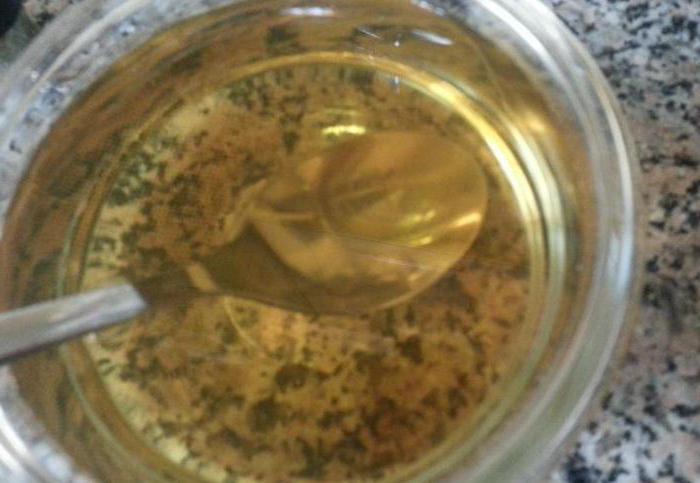
Combine in a separate saucepan glucose syrup, sorbitol, sugar and tartaric acid. After that, the vessel is sent to the stove and heated, constantly stirring its contents. In the resulting homogeneous mass Swollen gelatin is poured in a thin stream. All this is heated again, without boiling, and combined with a small amount of lemon juice. Then the saucepan is removed from the stove and cooled slightly. At the final stage, the mass, from which delicious homemade marmalade will turn out, is carefully poured into molds and sent to the refrigerator. After about four hours, it will be ready to serve.
Option with sour cream and fruit
According to the technology described below, a very tasty striped delicacy is obtained. It is liked not only by children, but also by the older generation. Therefore, it can be safely prepared for friendly gatherings in an informal setting. To make striped gelatin marmalade at home, make sure you have all the required ingredients in your pantry ahead of time. This time you will need:
- Twenty grams of gelatin.
- A couple of oranges.
- Two hundred grams of sour cream.
- Two large ripe apples.
- Fifty grams of powdered sugar.
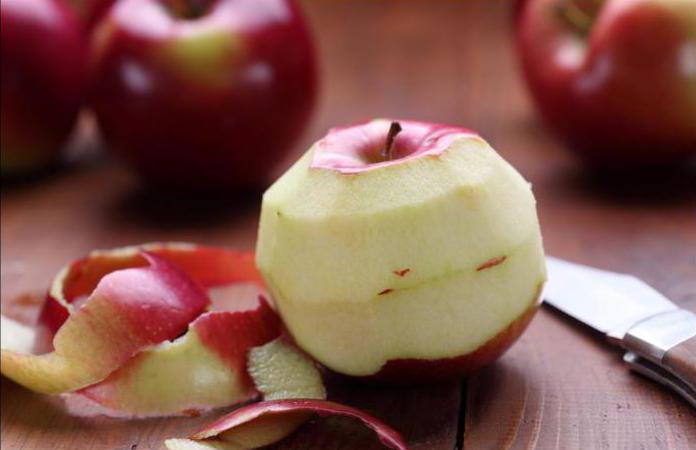
Additionally, you should have a pinch of orange food coloring in your kitchen.
Sequencing
To make it really tasty with gelatin at home, you need to strictly adhere to the recommended algorithm. First you need to do the preparation of fruit. Washed apples are cut in half, freed from the core and sent to the microwave for five minutes. After that, the hot fruits are carefully separated from the peel, and the resulting pulp is ground through a sieve.
The resulting applesauce combined in one bowl with sour cream and beat well with a blender, gradually adding half of the available powdered sugar there. The resulting mass is divided into two identical parts. A quarter of the dissolved and swollen gelatin is added to one half, poured into a mold and put in the refrigerator for a quarter of an hour.
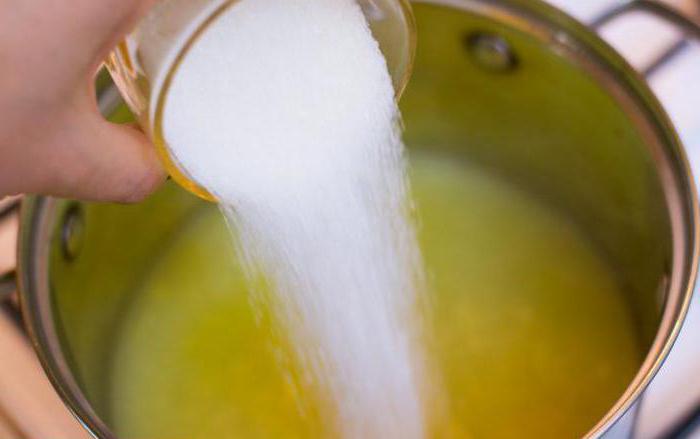
Meanwhile, juice is squeezed out of oranges, food coloring is added to it and the remaining powdered sugar. Everything is mixed and divided in half. A quarter of the swollen gelatin is poured into one of the parts and sent to a mold with an already frozen sour cream layer. All this is again cleaned in the refrigerator, but for thirty minutes. Then all these manipulations with the layers will be repeated again. Before serving, the striped delicacy is cut into small pieces, giving them the desired shape.
Variant with honey
Using this technology, it is relatively easy to prepare healthy apple marmalade with gelatin at home. It compares favorably with purchased delicacies in that it does not contain sugar. AT this case this sweet sand is replaced natural honey. To pamper your loved ones with such a dessert, make sure that you have everything at hand. necessary products. You will need:
- Five large ripe apples.
- Half a glass of water.
- Twenty-five grams of gelatin.
- Natural honey.
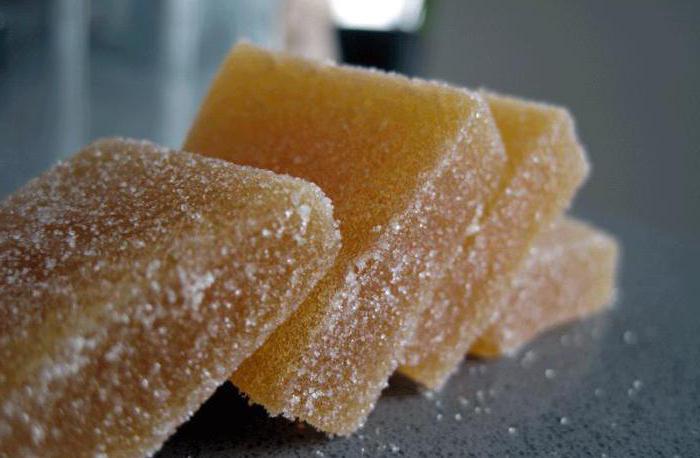
The amount of natural sweetener depends entirely on the personal taste preferences of the chef himself and his family members.
Cooking technology
First of all, you need to deal with gelatin. It is soaked in cold water and leave to swell. In the meantime, you can pay attention to the fruit. Washed apples are peeled and then freed from seeds. The fruits prepared by this method are rubbed on coarse grater, put in a suitable saucepan and placed on the stove. The fruit mass is stewed over low heat for a quarter of an hour, not forgetting to stir occasionally. When the grated apples acquire a beautiful caramel hue, honey is added to them and rubbed through a sieve.
The resulting homogeneous gruel is combined with swollen gelatin and sent to the stove. At the same time, it is important to prevent boiling. Then all this is poured into a mold and sent to the refrigerator. Marmalade with gelatin hardens at home for several hours. After that, it is taken out of the mold, cut and served on the table.
Variant with berries
This delicious dessert will become a real decoration of any children's holiday. It is colorful and has a jelly texture. And in its composition there is not a single artificial component. To make a bright and fragrant gelatin marmalade at home, you need simple and easily accessible products. In this case, your kitchen should have:
- Five tablespoons of sugar.
- Half a glass of fresh berries.
- A couple of tablespoons of gelatin.
- Three hundred milliliters of water.
To create such a dessert, any fresh berries. Most often, currants, blueberries, strawberries or raspberries are used for these purposes. Not bad palatability enjoy sweets made from peaches, apricots or plums. In winter, when there are no fresh berries on sale, it is quite possible to use mangoes, bananas, tangerines, oranges or kiwi. It is important that the fruits are ripe and have no visible damage.
Making marmalade at home (with gelatin)
Washed fresh berries are laid out in a deep saucepan and poured with a small amount of filtered water. The stewpan is sent to the stove and its contents are boiled for ten minutes. After this time, sugar is added to the resulting compote and mixed well, trying to achieve complete dissolution of the grains. All this is boiled for a couple more minutes and removed from the fire.
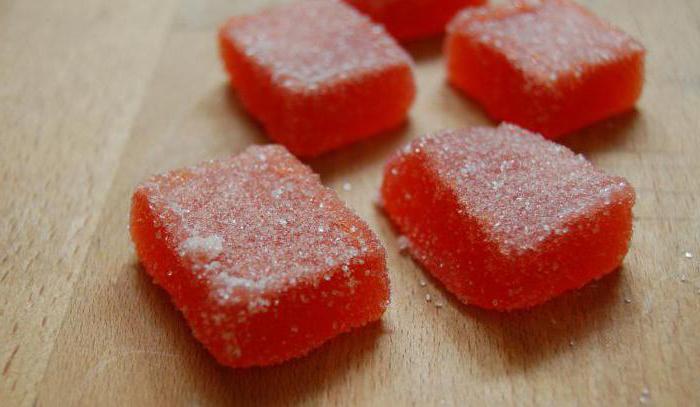
The hot berry mass is placed in a blender bowl and crushed to a puree state. Gelatin is poured into a separate bowl, poured with three tablespoons of boiling water and put aside. When the mass slightly increases in volume, it is well mixed and combined with berry puree. All this is poured into a saucepan and heated until the gelatin is completely dissolved. Immediately after this, the contents of the vessel are sent to the mold and put in the refrigerator. Berry marmalade with gelatin hardens at home for at least four hours. Only after that it is taken out of the refrigerator and cut into small squares or triangles.
The existence of marmalade in Europe became known in the 14th century.
Moreover, in Portugal, quince jam was considered marmalade, and in France and England, thick, jelly jam was made from citrus fruits.
Later, marmalade began to be prepared from other fruits containing a large number of pectin is a natural gelling agent.
As a substance, pectin was discovered a little over two hundred years ago.
The word "pectin" itself has Greek roots, which means that the ancient Greeks could have come up with marmalade, given that Greece is a Mediterranean country with a mild and warm climate, an abundance of citrus fruits, and it was like that even thousands of years ago.
But the astringent properties of quince, tangible even at first glance, or rather, taste, also indicate the veracity of the Portuguese version of the origin of marmalade. Although quince is a representative of the Middle Eastern flora, as indicated by its name and even astringent taste. But what about Portugal? Despite the fact that it was this country in the middle of the last millennium, having an excellent fleet, that was the main discoverer of new lands, countries and the most ancient civilizations of the planet. One way or another, medieval Portugal was involved in the discovery of marmalade, although it is clear that there were some oriental subtleties here.
Marmalade at home - basic technological principles
Indeed, how else could people at the dawn of civilization, without refrigerators and freezers, without knowing the technology of sugar production and canning, to preserve a generous harvest of fruits under the rays of a tropical or even hot sun? There were only two options: drying and boiling the fruit.
At a time when it was still very far from the discovery of sugar, and a little later, when it appeared, but was a great luxury even for the most noble nobles, both in Europe and in Asian countries, people learned to use the gifts of nature to preserve the harvest and make reserves.
Everywhere, honey and fruit juices served as a preservative, which were boiled until thickened.
Natural components of natural origin and in ancient times and now are the most valuable in the manufacture of marmalade. Therefore, marmalade made from sugar is a tasty but not healthy product.
In our time, sugar is cheaper than honey, and health is still the highest value for a person. Therefore, in order not to refuse marmalade, which manufacturers often make from cheaper raw materials, using sugar, artificial colors and flavors, lovers healthy sweets It is better to start making marmalade at home.
But for this you need to learn some subtleties of cooking. homemade marmalade.
The largest amount of pectin necessary for the preparation of natural marmalade is found in apples, quinces, pears, melons, peaches, apricots and plums, cherries and sweet cherries, and currants.
To prepare high-quality marmalade at home, with sufficient gelling properties and a viscous, dense structure, you can use any other fruit juices, but with the addition of pectin powder produced by the industry: in production it is produced from apple pomace, citrus peel and some other natural materials.
The main properties of pectin: the powder is slightly soluble in cold water. Its astringent properties appear when heated.
The next natural thickener is agar-agar, obtained by extracting special algae. The properties of this thickener are similar to those of pectin.
In addition to pectin and agar for the production of marmalade confectionery industry gelatin is used, obtained from raw materials of animal origin. Gelatin dissolves at lower temperatures, at 40ºϹ and above it loses its astringent properties. Low temperatures(from 0ºϹ) also destroy the collagen contained in gelatin.
These properties of thickeners must be taken into account when making marmalade at home, as well as other confectionery products.
If you are interested in marmalade with exceptionally beneficial properties, it is advisable to replace sugar with honey, stevia, fructose, or thicken fruit juices without using sugar.
To make marmalade at home look more appetizing and decorate the dessert table, there are many different ways to decorate it, but read about it in more detail in the recipes below.
Recipe 1. Marmalade at home from raspberries with pectin
Ingredients:
Raspberries (fresh or frozen) 0.5 kg
Pectin 50 g
Honey (unsweetened) 90 g
Cooking:
Rub the berries through a sieve: you should get 300 ml of juice. It is important to achieve its transparency, so it is advisable to pass the juice through a filter made of several layers of gauze and a cotton pad. Heat the juice to 50-60ºϹ, add pectin to it and bring to a boil after half an hour. Boil for five minutes. Cool to 30-35ºϹ and add honey, stir until honey is completely dissolved. At temperatures above 40ºϹ beneficial features honey is significantly reduced, so it is important to add this product to warm juice.
Pour the uncured juice into molds and refrigerate to set.
Raspberry marmalade with honey, without the use of sugar, can be used as a remedy for colds, even for those who are contraindicated in the use of sugar.
Recipe 2. Marmalade at home from plums
Cooking:
Plums 1.0 kg
Water 300 ml
Sugar 350 g
Pectin (powder) 50 g
Cooking:
Natural clarified juice from plums is extremely difficult to obtain without adding water. best grade plums for juice - Hungarian. Sort ripe berries, remove seeds. Plums should be steamed. Grind the boiled pulp until mashed, and hang it in gauze over a container into which the juice will drain. Transfer the puree to a saucepan, cover with water and boil a second time. Combine both parts of the resulting juice, add sugar combined with pectin. When the juice boils, hold on low heat for 10 minutes, and pour into molds while warm.
You can use molds for lollipops, cookies. To make marmalade very beautiful and bright, take, in addition to Hungarian, yellow plums and make a two-layer dessert. To do this, first fill the form halfway with red plum marmalade, and when it hardens, add yellow marmalade. In this case, start cooking marmalade from yellow plums 3-4 hours later, so that the first layer has time to harden in the refrigerator.
Recipe 3. Marmalade at home from quince
Ingredients:
Quince 1.5 kg
Molasses 300 g
Coconut flakes 100 g
Cooking:
The fruits must be washed and baked in the oven until soft. When they have cooled down to a temperature that is convenient to work with them further, rub through a sieve to get a pitted and skinless puree. In the resulting puree, add molasses or sugar syrup, or honey, after thoroughly mixing the mass, set to boil until thickened. During the cooking process, stir continuously and do not forget that for the preparation of marmalade it is better to use the same dishes that are usually used for cooking jam or jam.
Pour the cooled mass into molds and sprinkle coconut flakes, which will not only decorate homemade marmalade, but also give interesting taste. If you don't like the taste of coconuts, use sugar.
Recipe 4. Unsweetened marmalade at home, for snack dishes
Sometimes marmalade is unsweetened and can be served with different dishes and not just as a dessert. If you need to arrange festive snack, jelly or aspic, prepare vegetable marmalade.
Ingredients:
Beetroot 0.300 g
Carrot 250 g
Spinach 0.5 kg
Salt, pepper, sugar
Cooking:
Blanch the spinach and puree it with a blender. Add spices if needed. Wrap the washed root crops in foil and bake in the oven until tender. Mash them when cool and season with spices if necessary. Add 10 g of agar to each puree, if necessary, add a little water (for a very thick puree) and let each mass boil. You only need to cook until the agar dissolves.
Prepare dishes to spread the puree in a thin layer. You can lay out each type of puree separately, or make a three-layer mass. When the unsweetened marmalade hardens, cut out the figures of the desired shape to decorate the dishes.
The use of agar is remarkable in that after cutting out the figures, the remaining pieces of marmalade can be collected and heated again until a liquid mass is obtained, and then shaped into the desired shape.
Recipe 5. Fruit marmalade at home from gooseberries and currants
Ingredients:
Berries of red currant and gooseberry - 1 kg each;
Sugar 0.5 kg
Cooking:
Sort the berries, removing dry inflorescences and stalks, wash them. Do not mix the berries, both masses must be prepared separately. Divide the sugar into two equal parts and add each part to heat-resistant containers with berries. Mash the berries slightly and place the containers in an oven preheated to 180ºϹ for 25-30 minutes. When the berry masses thicken, remove them and cool to rub through a sieve and remove the cake. Add 100 ml of boiling water to each container, stir and pour the berry puree into separate, uniformly sized molds. The form must first be lined with parchment. Put it back in the oven, but already at a temperature of 100-120ºϹ, in order to evaporate the water. When the juice becomes viscous, turn off the oven and open the door a little, but do not remove the molds until completely cooled. If necessary, to dry the marmalade, preheat the oven to 50-60ºϹ two or three times. When the marmalade is ready, sprinkle its surface with water or syrup. Transfer the marmalade from one mold on top of another layer, moisten the parchment and remove it. Sprinkle with sugar and let dry. After that, turn the mold over, remove the parchment from the bottom layer in the same way, sprinkle sugar on the wet surface of the back layer again. Cut the finished marmalade into pieces and place in a storage box lined with parchment. You need to store such marmalade in cool conditions, avoiding high humidity.
Recipe 6. Marmalade at home from orange juice on gelatin
Ingredients:
Red orange juice 1.0 l
Fructose 150 g
Gelatin 50 g
Cooking:
If you use ready-made, pasteurized juice, then it only needs to be heated to dissolve the fructose. Pour about 200 ml of the juice taken into a separate bowl, add gelatin to it and heat in a water bath until completely dissolved. Pour the dissolved gelatin into the total mass of juice in a thin stream, stirring constantly. Pour the gelled juice into molds and refrigerate to set.
Gelatin-based marmalade is best cooked in not large quantities so that it can be used immediately. Keep it cold, remembering that even when room temperature gelatin begins to “melt”, and the gelled mass spreads and it is almost impossible to restore the properties of gelatin.
Recipe 7. Marmalade at home "Rainbow"
Ingredients:
oranges
Coconut milk
Sea buckthorn
Red grapes
Sugar syrup (or molasses)
agar agar
Cooking:
For multi-colored marmalade, use the juice of fruits of different colors, in the same amount. Add syrup or molasses to each of the juices in a ratio of 1:1. Use agar-agar in proportion: for 100 ml of juice - 10 g of agar. We prepare the masses for a colored dessert separately, in turn: we combine the juice with agar, add the syrup, bring to a boil and pour into a rectangular mold with a high rim. Agar hardens quickly, so you can immediately start preparing the next layer of marmalade. We prepare it in exactly the same way and pour it onto the frozen, first layer. We alternate the juices in any order: it is important that the layers are bright and contrasting in relation to each other.
You can take more to prepare such marmalade coconut milk(or replace it with cream), and alternate each layer of fruit marmalade with white marmalade. At the end of the work, cut the frozen layer into pieces.
Marmalade is a delicious dessert. He may also be healthy dessert if you avoid excessive consumption of sugar in the cooking process. The main thing to remember is that sugar does not affect the stability of the dense, gelled marmalade structure. A dense consistency is formed by pectin, agar or gelatin, the amount of which can be changed in the recipe, depending on the desired effect.
To make marmalade absolutely dietary product replace sugar with honey. This is easy to make in any recipe. But for this you need to take into account one nuance: if you don’t like very much sweet dessert, then the ratio of sugar and honey is approximately 2:1, that is, honey must be used half as much as sugar. This is explained simply: honey contains free fructose molecules, which affect the taste.
Marmalade is a delicacy that no sweet tooth will ever refuse! Sweet, flavorful, mild and always available in almost every grocery store. Undoubtedly, on sale you can always find marmalade in a variety of variations. There are an incredible number of marmalade recipes today, and the counters of the confectionery departments only confirm this. On sale you can find marmalade of various shapes - from cubes to stars, different colors - here, thanks to food coloring, confectioners generally have where to roam, of any size and with various additives. If you wish, you can cook the marmalade recipe at home, and we will tell and show you how to do it right.
How to make marmalade
Marmalade recipes are diverse, but in each recipe there are components that remain unchanged. Simply put, there are products without which marmalade cannot be prepared! The basis of homemade marmalade recipes is sugar and fruits. Fruit for marmalade recipes will need fully ripe.
Briefly, the technology for preparing marmalade can be described as follows: fruits are placed in a bowl and put on fire, sugar is added a little later, this mixture is boiled until thickened, stirring constantly. If there is a trace of a tablespoon left in the marmalade, this indicates that it is ready. After cooking, the mass of sugar and fruit should be rubbed through a sieve and add spices, lemon and other additives. Then the marmalade is laid out in a clean bowl and covered only when it hardens slightly and is covered with a crust. Here is such a homemade marmalade - nothing more. And its benefits cannot be overestimated, because it differs from factory-made marmalade not only in the absence of harmful preservatives and dyes. Marmalade contains pectin, which helps the body cleanse itself of constantly accumulating harmful substances. And finally, it can be given even to small children! Isn't this the best confirmation of the benefits of homemade marmalade?
marmalade recipes
We offer simple marmalade recipes with photos in this section. Here, our culinary experts have shared proven marmalade recipes with photos so that you can start making the best homemade marmalade in the world without a doubt. Very soon you will be able to please your family with homemade apple marmalade, the recipe of which you will find here, and not only from apples! You will forever give up factory sweets if you ever try to cook them yourself at home. Homemade marmalade, which you can cook using our recipes with photos, is a very tasty dessert, see for yourself!
Although shops offer a wide variety of sweets, culinary lovers continue to prepare desserts at home. This applies not only to cakes and pastries, but also marmalade. The recipe for homemade marmalade is not complicated and has a richer taste, and also does not contain preservatives.
Homemade marmalade: a recipe that is both tasty and healthy
Homemade cherry marmalade: recipe
You will need: - 500 g of cherries; - 20 g of butter; - 20 g of gelatin; - 300 g of sugar; - 50 g of powdered sugar.
Remove pits from cherries. Put them in a saucepan and pour 1/2 tbsp. water. Cook for 10-15 minutes over medium heat, then reduce the temperature of the stove and put gelatin and 50 g of sugar to the cherry. Cook for a couple of minutes, then add another 100 g of sugar and butter and cook, stirring, for 5 minutes. Pour the remaining sugar and cook the berry mass until it dissolves. Pour the resulting berry mixture into small silicone molds, cover cling film and put in the refrigerator. After 3-4 hours, remove the marmalade from the molds, roll in sugar and leave in a dry place for a day. After that, you can serve marmalade for dessert or pack it in a box and store in a cool, dry place for a month.
Citrus marmalade: homemade recipe
You will need: - 300 g of lemons; - 700 g of oranges; - 600 g of sugar; - a bag of gelatin; - 100 g of powdered sugar.
According to this recipe, marmalade will have enough sour taste. You can add more sugar during cooking if you like.
Peel lemons and oranges, divide into slices, pour a glass of water and cook over medium heat for 10-12 minutes. Allow the mixture to cool slightly and puree in a food processor until smooth. Add sugar to this mass and cook for 1.5 hours over low heat, stirring regularly so that the marmalade does not burn. Dissolve gelatin in warm water and add it to the rest of the ingredients, mix thoroughly. Pour the marmalade into a flat mold and refrigerate for a day. After that, cut the fruit mass into cubes, roll them in sugar and serve.
Homemade marmalade candies: recipe
Chocolate candies can also be prepared at home, the main condition is to strictly follow the recipe.
You will need: - 250 g of butter; - 500 g of flour; - 425 g of sugar; - 100 g of corn starch; - 2 eggs; - a pinch of salt; - 300 g of raspberries; - 10 g of gelatin; - a pinch of vanillin; - a bag of yeast ;- 200 g of chocolate.
Start making candy with marmalade. Fold the raspberries into cheesecloth and squeeze all the juice out of it. Pour it into a saucepan, add 300 g of sugar and cook for 15-20 minutes. Dissolve gelatin in warm water and add to the rest of the ingredients. Pour the future marmalade into a flat form, cool and put in the refrigerator for a day. Ready dessert chop into small cubes.
For the soufflé, cut the softened butter, put it in a bowl and add the remaining sugar, vanilla and a pinch of salt. Beat the butter with a mixer, then break 1 egg into it. From the second egg, add only the yolk. Pour flour, yeast and starch into it. Mix thoroughly and leave for half an hour. Then form hazelnut-sized balls from the resulting workpiece. In the middle of each of them, add a piece of marmalade. Shape the candies into a pyramid shape and place them on a greased baking sheet. Bake the soufflé in the preheated oven for 10-15 minutes. Meanwhile, melt the chocolate steam bath. Dip each candy into chocolate and leave to dry. Serve the dish when the chocolate has hardened.
Puff marmalade at home
You will need: - 500 g of fresh strawberries; - 500 g of peaches; - 500 g of ripe pears; - 500 g of sugar; - vanillin; - powdered sugar.

Peel the sepals from the strawberries and beat in a mixer until puree, adding a pinch of vanilla. Put the suitable mass in a saucepan along with 200 g of sugar and cook over medium heat for 15 minutes. The puree should be quite thick. Scald the peaches with boiling water, remove the peel from them and remove the seeds. Put the pulp in a saucepan, adding 1/4 tbsp. water. Boil for 10 minutes, then add 150 g of sugar. Cook until sugar is completely dissolved. Peel the pears, cut in half and remove the core with seeds. Boil the pulp for 20 minutes until the juice evaporates, then put the remaining sugar and cook for another 10 minutes. Dissolve gelatin in warm water and add first with strawberry puree. Take a form with high edges and pour the strawberry mass into it, then put it in the refrigerator for 2 hours. Repeat the operation with peach and pear mass, laying them on top strawberry marmalade. Cut the finished marmalade into cubes and roll in powdered sugar.
Marmalade with gooseberries and apples: recipe
You will need: - 800 g of gooseberries; - 500 g of apples; - 700 g of sugar; - a pinch of cinnamon.
You can add a little lemon juice to this marmalade for additional flavors.
Peel the apples, remove the core and cut into slices. Put them in a saucepan, pour 1/2 tbsp. water, add cinnamon and cook for 10 minutes. Grind the gooseberries in a blender to a puree state and wipe it through a sieve so that the bones do not get into the marmalade. Add the berry mass to the apples and cook for another 10 minutes. Add sugar and cook, stirring, until the fruit and berry mixture thickens. Cool the finished marmalade, transfer it to a cleanly washed jar and close the lid. Store dessert in the refrigerator until consumed.
The 20th of October , Alexandra Bondareva
Marmalade is a delicious dessert made from fruits or berries, with the addition of granulated sugar. In addition, marmalade is very useful for the human body, as it contains pectin in large quantities.
Making delicious marmalade at home is quite simple. Moreover, a do-it-yourself delicacy is much more useful than a store-bought one, as it does not contain dyes, preservatives and other harmful additives.
Marmalade can be divided into several types, depending on the products used for its preparation: berry, fruit, jelly and jelly-fruit.
Recipes for making homemade marmalade
The easiest way to make marmalade is from berries and fruits containing natural pectin. Since pectin is a natural thickener, it is used to cook fruit juice or mashed potatoes turn into marmalade during cooking. Large amounts of pectin are found in pears, apples, quince, apricots and citrus fruits.
If the fruits from which you plan to cook marmalade contain an insufficient amount pectin, you can add to them puree or juice of those fruits in which it is contained, or gelatin.
Apple marmalade
Apples are the most common and affordable product for making marmalade. It is best to use greenish apples with sourness (they have more pectin). If you take apples of summer, floury varieties, then you must either mix them with sour berries, or add currant or gooseberry puree to the marmalade.
We will need:
- Apples (2 kg);
- Sugar (480-500 grams);
- Purified water (100 grams).
Cooking:
- My apples, peel, cut out the cores, and cut into large slices.
- We put the core and peel in a saucepan, add water, and cook for about 30 minutes until a mushy state.
- The resulting mass is wiped through a sieve and mixed with chopped apples.
- Pour half of the prepared sugar and cook the apples in a saucepan until the apples are soft.
- We pass the boiled mass through a meat grinder or grind it in a blender.
- Put the puree back on the fire, add sugar, and boil for 40 minutes at a low temperature (you can also boil it in the oven or microwave). Periodically stir the mass.
- We cool the liquid marmalade and spread it on a baking sheet about 1 cm thick or pour it into specially prepared Silicone forms.
- Leave the marmalade to harden at room temperature for 1-2 days.
The resulting marmalade can be sprinkled with sugar or nuts while still hot. You can serve it by cutting into figures or by twisting a sheet of marmalade into a roll, cut into rings.
Marmalade from citrus fruits
To prepare marmalade, you can use each type of citrus fruit separately, you can, at your discretion, add other types of citrus fruits.
We will need:
- Grapefruit (2 kg);
- Orange (1 kg);
- Lemon juice (200 ml);
- Sugar sand (3 kg);
- Vanilla (1/2 sachet);
- Ground cinnamon (1 teaspoon).
Cooking:
- Wash citrus fruits thoroughly, peel and peel.
- Grind the resulting pulp to a puree state.
- Put in a saucepan fruit puree, sugar, spices and lemon juice. Mix thoroughly.
- Bring the mixture to a boil and then simmer until thickened.
- We spread the finished marmalade on parchment paper and chill.
You can sprinkle citrus marmalade on top with coconut flakes, cooking sprinkles, or just powdered sugar.
Cherry marmalade
Cherry juice must be combined with apple or currant juice.
We will need:
- Cherry (2 kg);
- Sugar (6 glasses);
- Apple juice (4 cups).
Cooking:
- We wash the cherries, separate from the stones and grind the berries to a puree state.
- Add to puree Apple juice, pour into a saucepan and heat to a boil.
- Pour sugar and cook the marmalade until tender (until thickened) over low heat.
We lay out the finished mass in silicone molds and sprinkle with chopped nuts or powdered sugar on top.
To prepare marmalade, use only ripe (even overripe!) Fruits.
- To improve the taste, you can add various natural flavors to the marmalade during the cooking process: vanilla, cloves, cinnamon, zest.
- Cook marmalade in small portions, because the shorter the cooking time, the faster the liquid evaporates and thus improves the quality of the product. At the same time, do not forget to stir the marmalade.
- Readiness of marmalade check in the following way: if a drop of marmalade does not spread on a cold dish, it is ready.
- You can pour the finished marmalade on a baking sheet until it cools, and then cut it into various shapes: rhombuses, circles, squares, etc., or you can pour it into special silicone molds.
- You can make multi-layered marmalade: for this, it is poured in layers different types marmalade on top of each other (first pour the first layer, when it hardens - the next, etc.).
- You can use empty candy boxes to store homemade marmalade. Marmalade is stored at room temperature for several weeks.
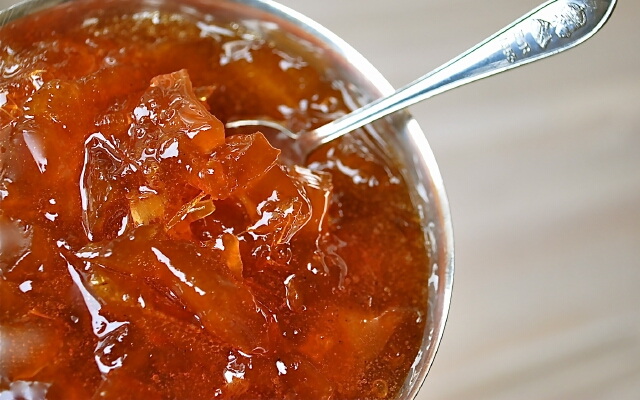
Making homemade marmalade is easy, and depends only on your imagination and taste preferences.


